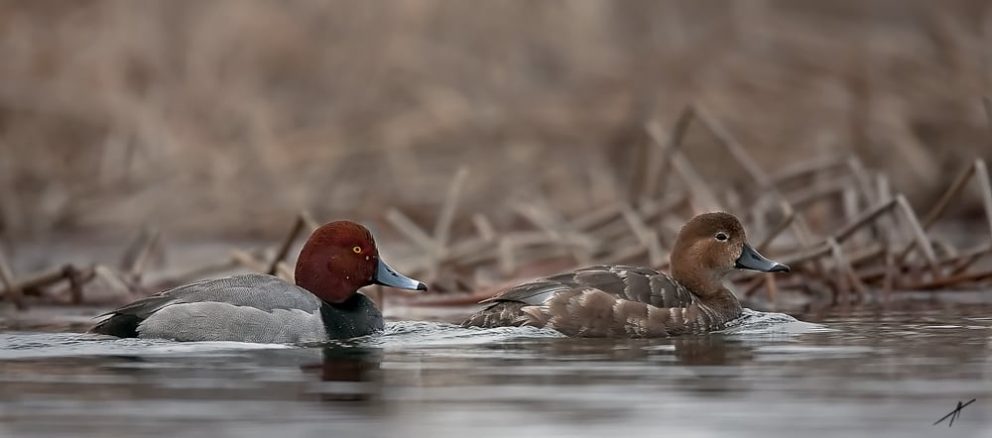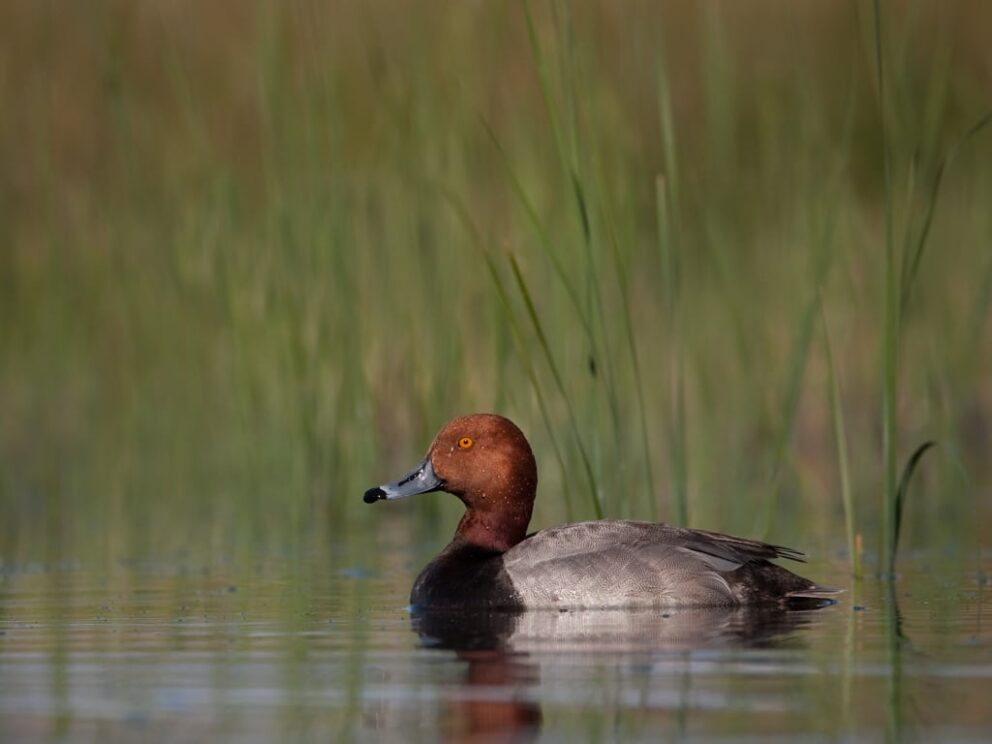- SCIENTIFIC NAME
- Aythya americana
- CLASSIFICATION
- Bird
- LIFE SPAN
- 5-10 Years
- SIZE
- 16.5-21.3” | 1.3-3.3lbs
- STATE CONSERVATION STATUS
-
- State Protected
- FEDERAL CONSERVATION STATUS
- Least Concern
- GAME STATUS
- Game
- GAME TYPE
- Waterfowl
- Washoe
- Humboldt
- Pershing
- Churchill
- Mineral
- Lyon
- Douglas
- Carson City
- Storey
- Elko
- Lander
- Eureka
- White Pine
- Esmeralda
- Nye
- Lincoln
- Clark
Habitat & Range
Redheads can use a variety of habitat due to being opportunistic in nest site selection. They can be found on reservoirs, wetlands, streams, and bays.
- Lakes and reservoirs
- Marsh
- Rivers and streams
Threats
- Drought
- Habitat Loss
- Water Diversion
Natural History
Female Redheads are well known for their habit of “nest parasitism” where they lay their eggs in the nests of other ducks, to be incubated and raised by others. Nests are built over water in dense vegetation and sometimes out of water, but still near a water source. Males do not assist with nest building, incubation, or chick rearing. After the ducklings hatch, they are mobile and ready to leave the nest within 24-48 hours.
Redheads are diving ducks and will dive to the bottom of a body of water to feed on mostly plants. They will occasionally ingest aquatic animals such as insects, mollusks, and other invertebrates. Redheads will gather in large flocks with other species of ducks and will feed on plants that are brought to the surface.
Fun Facts














